by Renée Rondeau and Tass Kelso

On a very windy day in March, 2011 a 5,000 acre fire burned across a piece of the prairie east of Pueblo Airport, Colorado. Much of this fire traveled through a small drainage dominated by greasewood (Sarcobatus vermiculatus), rabbitbrush (Chysothamnus nauseosus), and cholla (Cylindropuntia imbricata) shrubs with a dense understory of blue grama (Chondrosum gracile) and alkali sacaton grasses (Sporobolus airoides); secondary grasses included sand dropseed (Sporobolus cryptandrus) and three-awn (Aristida purpurea). As luck would have it, CNHP ecologist Renée Rondeau had set up two permanent vegetation monitoring plots in 1999 and measured the cover, density and frequency of these species. Measurements were repeated in subsequent years including the summer of 2010, enabling us to measure changes in the community as a result of this fire.
On August 16 and 17th, 2011, Renée Rondeau and Tass Kelso (Colorado College) collected vegetation measurements and took repeat photos of the plots. The fire had the effect of transforming what was a fairly dense shrubland into a grassland with sparse shrubs.
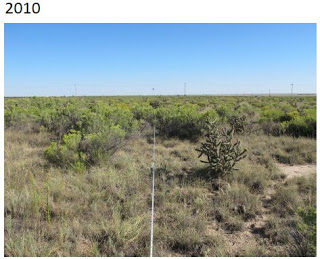
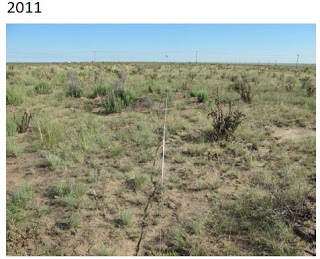
Rabbitbrush was hit hard with nearly 90% mortality. Cholla individuals showed about 50% mortality; the remaining live chollas were either stump-sprouting from completely charred tops or intact plants with a weakened look of minimal green coloration and stem damage that may die over the next year. Greasewood did surprisingly well; although all of the greasewood had burned to the ground, most were successfully stump-sprouting and had vigorous lush green growth. One greasewood plot had no loss of individuals, and all were stump-sprouting. The other plot lost 34% of individuals, with little to no regrowth apparent.

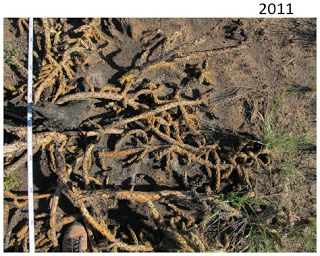
Grasses were also negatively impacted by the fire and lost density; numerous culms were completely burned. The grasses that did survive appeared healthy with many inflorescences. Blue grama lost at least 25% of the plants, while alkali sacaton grass lost 38%. Sanddropseed was nearly eliminated with ¾ of the population not visible. Litter was completely burned and bare ground greatly increased going from 24% cover in 2010 to 70% in 2011.
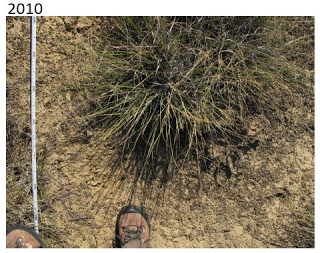
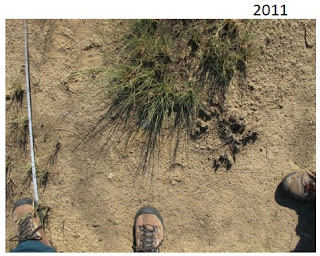
Due to all of these changes, the landscape has a very different appearance. Depending on moisture availability, we expect shrubs could start sprouting from seeds within the next few years and the shrubs start filling in the open spaces, but it may take years until it goes back to looking like a shrubland. We will let you know as we plan to watch the progression as often as we can.




